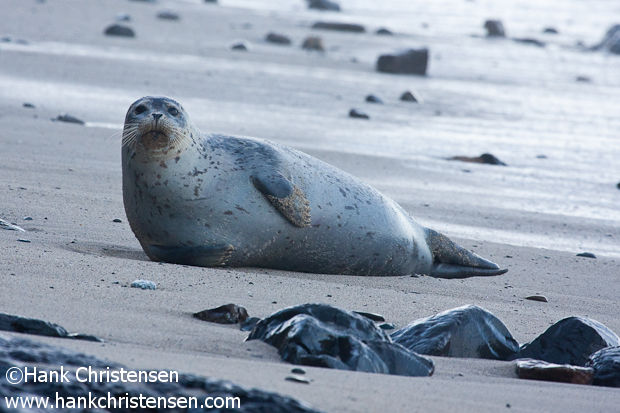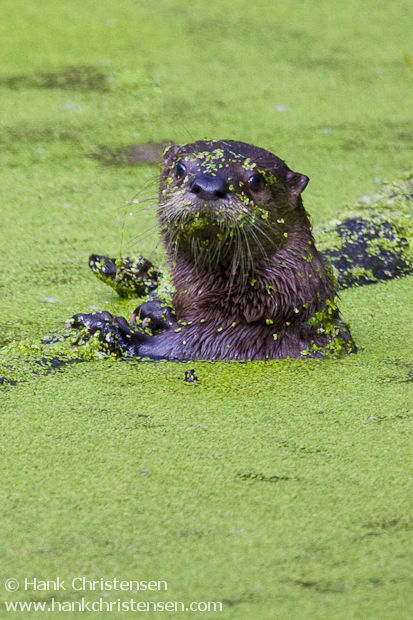
I took this photo last week in Moss Beach, just north of Half Moon Bay. At low tide, harbor seals can sometimes be seen lounging on the exposed rocks, far away from the beach. However, I was here at dawn, and it was still about an hour away from high tide. I knew the rocks would be covered, and I was hoping I might see some along the beach. Unfortunately, the tide was in much further than I thought it would, leaving only about 20 feet between the sea cliff and the pounding surf.
Not seeing any seals, I decided to focus instead on landscapes. I set up my tripod at the base on the path going down to the beach. As I was setting up a shot, far in the distance down the beach I saw movement. This had to be the seals. I re-evaluated the tide situation, and figured if I gave myself a strict time limit, I should be able to make it down the beach and back before the tide rose to the bottom of the cliff (kids don’t try this at home). Not wanting to get stranded against a cliff and sucked out to sea, I gave myself 10 minutes to get a shot and get out.
I preset the camera controls and got my long lens ready, then did my fastest “stealth” walk I could muster. As I got closer, I saw there was one seal left on the beach, the others having gone into the ocean (I believe this was the movement I had seen when I was down the beach). He appeared fast asleep. Just then, a large wave came in and broke just below him, sending water underneath him, and waking him up. He only looked up once, but I was ready. I got the shot, and knew it was time to get out of there.



